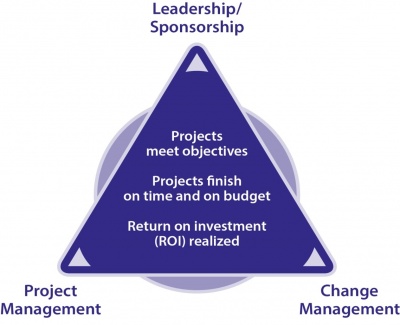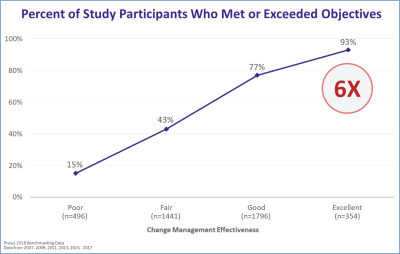Change Management
Contents
Change Management Defined
Change Management: Change management is defined as the methods and manners in which a company describes and implements change within both its internal and external processes.
When conducting any significant WFM enhancement or transformation, the success of the program will be directly influenced by the strength of your change management framework developed. While most WFM teams would think to implement a program management team, often the importance of change management, and the associated disciplines is overlooked. Programs leveraging the proper change management framework are cited as having 6x the effectiveness of accomplishing the program's objectives (Prosci 2018 Benchmarking data).
Requirements: What Do We Need For An Effective Change Management Framework?
Whether you are using an existing framework, such as the Prosci Methodology, or developing your own framework, there are several critical concepts behind the workforce management function that mandate you leverage a solid change management framework for your WFM transformation:
- WFM principles and practices have the potential to greatly impact a company's operational expenses, the customer experience, and in many organizations, WFM will influence top-line revenue.
- WFM teams often are associated with a negative perception from frontline staff; WFM represents the organization trying to squeeze the last ounce of productivity out of workers.
- Leadership often overemphasizes two roles for the WFM team to manage; expense and experience (through maintaining SL availability), without equal emphasis on internal customer experience (the call handling employees).
WFM teams will always have a significant challenge in proposing and implementing change, and without that change management framework, will struggle with adoption.
While your WFM Strategy may take several forms, any WFM transformation should be founded on a strategy that places equal emphasis on three elements;
- Expense: accurate forecasting, optimal scheduling, and proactive variance management in real-time management
- External Experience: Maintaining availability by delivering service level, 1 interval at a time.
- Internal Experience: Designing and managing processes that balance expense management with employee satisfaction
WFM experts are not likely to be well-versed in change management. Yet, with the WFM team members, their processes, and the technology leverages, they have the ability to impact the success of an entire company. Hence, while it's critical to get the strategy and deployment of a transformation program correct, it's as critical to have a successful change management framework.
ADKAR Model
Leveraging the Prosci® approach, study the acronym A D K A R as a starting stop. ADKAR stands for:
- Awareness
- Desire
- Knowledge
- Ability
- Reinforcement
Awareness
Change begins with the organization aligned and understanding the why behind the change. Ask, and be able to clearly articulate:
- What is the nature of the change?
- Why is the change needed?
- What is the risk of not changing?
There should be a strong connection between your WFM Strategy and how it informs awareness. You may chose to bridge your Awareness and the questions above back to your WFM Vision and Mission Statement
Desire
Change involves personal decisions impacting stakeholders who may have competing priorities. In addressing the Desire for change associated with a WFM operation, you need to address a critically important question:
- What's in it for me?
Whether stakeholders decide to support the change, engage and participate is critically dependent on how a change management program is designed.
Knowledge
Ability
Reinforcement
Key Forecasting Definitions
Forecasting requires common definitions behind the terms used in call center environments. The most important of these terms associated with this activity are:

